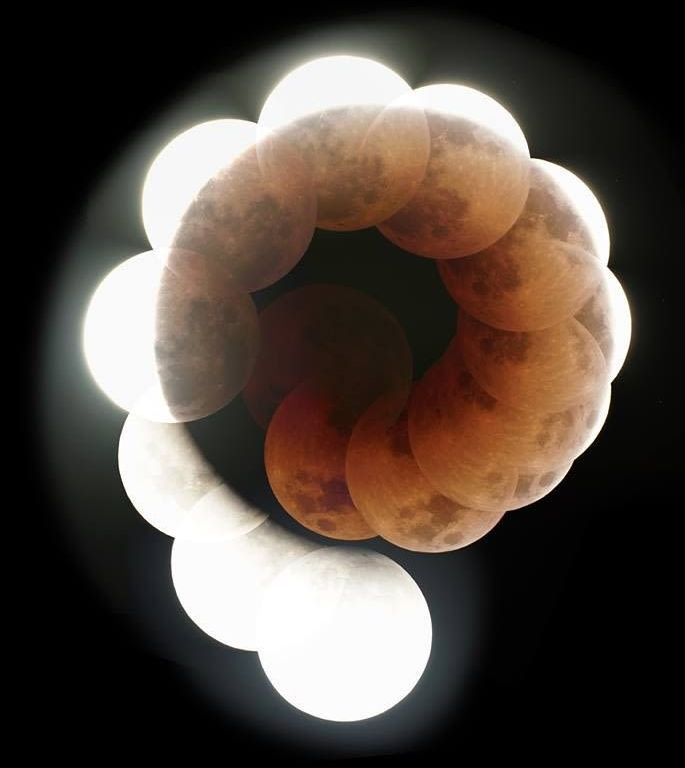Look below the surface.




By Chelsea Whyte
Swirling patterns in the sky may be signs of black holes that survived the destruction of a universe before the big bang.
“What we claim we’re seeing is the final remnant after a black hole has evaporated away in the previous aeon,” says Roger Penrose, a mathematical physicist at the University of Oxford.

‚Every day there are roughly 386,000 new mouths to feed, and in that same 24 hours, scientists estimate between one and 100 species will go extinct. That’s it. Lost forever.
To deal with the biodiversity crisis we need to find a way to give nature more space—habitat loss is a key factor driving these extinctions. But how would this affect our food supplies?
New research, published in Nature Sustainability, found it could mean we lose a lot of food —but exactly how much really depends on how we choose to give nature that space. Doing it right could mean rethinking how we do agriculture and conservation altogether.
We explore some of the ramifications arising from superflares on the evolutionary history of Earth, other planets in the solar system, and exoplanets. We propose that the most powerful superflares can serve as plausible drivers of extinction events, and that their periodicity corresponds to certain patterns in the terrestrial fossil diversity record. On the other hand, weaker superflares may play a positive role in enabling the origin of life through the formation of key organic compounds. Superflares could also prove to be quite detrimental to the evolution of complex life on present-day Mars and exoplanets in the habitable zone of M- and K-dwarfs. We conclude that the risk posed by superflares has not been sufficiently appreciated, and that humanity might potentially witness a superflare event in the next $\sim {10}^{3}$ years, leading to devastating economic and technological losses. In light of the many uncertainties and assumptions associated with our analysis, we recommend that these results should be viewed with due caution.

By pure coincidence, the article by Seth Baum was published just 5 days after a small asteroid exploded over early warning Tule station in Greenland.
This paper studies the risk of collision between asteroids and Earth. It focuses on uncertainty in the human consequences of asteroid collisions, with emphasis on the possibility of global catastrophe to human civilization. A detailed survey of the asteroid risk literature shows that while human consequences are recognized as a major point of uncertainty, the studies focus mainly on physical and environmental dimensions of the risk. Some potential human consequences are omitted entirely, such as the possibility of asteroid explosions inadvertently causing nuclear war. Other human consequences are modeled with varying degrees of detail. Direct medical effects are relatively well-characterized, while human consequences of global environmental effects are more uncertain. The latter are evaluated mainly in terms of a global catastrophe threshold, but such a threshold is deeply uncertain and may not even exist. To handle threshold uncertainty in asteroid policy, this paper adapts the concept of policy boundaries from literature on anthropogenic global environmental change (i.e., planetary boundaries). The paper proposes policy boundaries of 100 m asteroid diameter for global environmental effects and 1 m for inadvertent nuclear war. Other policy implications include a more aggressive asteroid risk mitigation policy and measures to avoid inadvertent nuclear war. The paper argues that for rare events like large asteroid collisions, the absence of robust data means that a wide range of possible human consequences should be considered. This implies humility for risk analysis and erring on the side of caution in policy.

Meteors could be a possible trigger of the nuclear war.
Data from NASA’s Jet Propulsion Laboratory shows a record of an object of unspecified size traveling at 24.4 kilometers per second (about 54,000 mph, or Mach 74) at 76.9 degrees north latitude, 69.0 degrees west longitude, on July 25 at 11:55 p.m. That latitude and longitude checks out as almost directly over Thule, Greenland.


The 21st century’s longest lunar eclipse has passed, eclipse doomsday fever has subsided, and all that’s left are the memories and pictures, which you can find everywhere online. But one image really stood out to us—not because of the way the Moon looked, but because of how it made the Earth look.
Australian amateur astronomer Tom Harradine had always wanted to create an image of the Earth’s umbra, the darkest inner region of the shadow. But during an eclipse, the Moon doesn’t pass through the whole of the Earth’s shadow. He needed a trick in order to show the whole thing.
“One way, I thought, to get the full circle of the umbra from a single eclipse event is to artificially locate and rotate successive eclipse images so as the shadow boundary forms a circle,” he said. “The trick is to keep the curvature of the shadow matching up as precisely as possible. Which images to choose is up to artistic license and I chose a spiral effect, not only to show the umbra but to also show the progression of the eclipse as time went on.”
